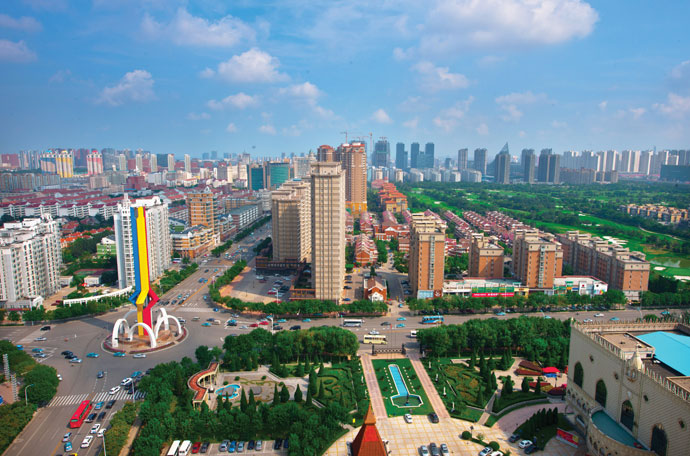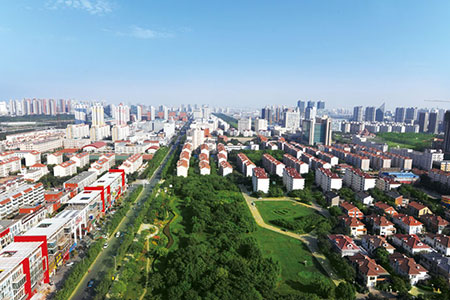Of the five countries attending March’s BRICS summit in South Africa, only one could boast a growth rate significantly higher than 5 percent. That was China, and although its current growth of about 8 percent is less than half the 20-percent rate seen in headier days, it goes some way to explaining why it is still attracting serious money amid a worldwide slump in foreign direct investment (FDI).
“Firstly, it’s the 300- to 400-million middle class consumers in China. They have more money to spend and want a better life. For this better life, the government must improve healthcare, transportation and everyday living needs. On top of this, they need more energy, cleaner air and water, and more food,” says Stanley Chao, managing director of Los Angeles−based All In Consulting and the author of “Selling to China: A Guide to Doing Business in China for SMEs.”
“Secondly, the government is on a continued spending spree to maintain the 8- to 10-percent GDP growth. They’ll continue to import cement, raw materials and anything industrial to keep up with this hyper growth.”
No Time for Complacency
Nevertheless, China has not been immune to the FDI downturn. In February, the Ministry of Commerce said China received $9.27 billion of FDI in January, a drop of 7.3 percent year-on-year. Fourteen of the past 15 months have seen a year-on-year decline.
But that’s nothing compared to the FDI plunges experienced by the US, Japan and European countries, which suffered 90 percent of the damage as global FDI fell to $1.3 trillion from $1.6 trillion last year, according to the Global Investment Trend Monitor belonging to UNCTAD, the UN’s trade and investment think tank. The overall fall meant that 2012 was the first year in which developing nations attracted more FDI than the developed world.

Modern Services District in TEDA
Photo Courtesy of He You An
“China is doing better than some other countries, but we cannot afford to be complacent, and we face many challenges. How we plan for the future will be crucial for our success,” says Lang Dong, vice-chairman of the Tianjin Economic-Technological Development Area (TEDA), one the development zones that have helped drive China’s meteoric rise.
Lang’s prudence is underwritten by continuing large-scale investments from across the spectrum, with technology and the service sector making particularly strong showings recently. For example, Dow Chemical has invested over $1 billion in logistics and chemical projects at TEDA while Johnson Controls set up a $200-million new energy venture. Denmark’s Haldor Topsoe has newly allocated $200 million to a TEDA-based catalyst project. General Nice Group, a resources and logistics firm, has invested over $50 million in establishing a presence at TEDA, while China Industrial Leasing input an investment of $50 million in the zone. The geo-engineering firm OYO Corporation set up a joint venture with an investment of $6.5 million. World-recognized security software firm McAfee also recently set up a new plant at TEDA. This year has also seen increases in TEDA investments by Samsung (an extra $110 million); Japanese drink maker Pocari (a further $65 million); Shell Lubricant (an extra $40 million) as well as Belgium’s Betafence.
According to the Ministry of Commerce, manufacturing is still attracting increasing FDI, but it is being outperformed by the service sector.

TEDA
Photo Courtesy of ZHSTUDIO
“Twenty years ago, all FDI was for eventual export,” says Chao. “Today, I would put it at 70 percent for the domestic market and 30 percent for export. With the middle class growing at between 10 and 15 percent per year, almost every multinational wants a piece of this action. FDI is now going to products and services that are higher up in the food chain. Before, FDI was for textiles and low-tech manufacturing,” he continues. “Now, FDI is for manufacturing and research and development for nanotechnology products, advanced automobile fuel systems, aviation, biotechnology and even medical research and clinical studies.”
However, Ravi Ramamurti, director of the Center for Emerging Markets at Northeastern University, cautions about writing off China’s export machine, which has driven most of the past 30 years’ growth, too quickly.
“The death of China as an export powerhouse is vastly exaggerated. No other country is as attractive a market or as attractive a source of talent as China. Only one thing has changed: Chinese wages have risen and the supply of cheap labor for low-end work is disappearing, particularly in the coastal provinces,” he says. “Companies in these locations are automating rapidly and moving to more sophisticated tasks. The Special Economic Zones will continue to thrive, but as centers for higher value-added products, not low-end products.”

The Ministry said FDI from the US and Japan was down about 20 percent in January year-on-year, but FDI from the EU was up 82 percent, including a massive 4,000-percent jump in investment from Sweden and a 350-percent increase from Denmark, both leaders in the high-tech and green energy sectors.
Arnaldo Abruzzini, secretary-general of Eurochambres, the association of European chambers of commerce, told the China Daily newspaper that smaller European companies now believe the time is ripe for them to invest in China.
Meanwhile, big western MNCs are also maintaining high levels of investment, according to Ramamurti.
“For a country like China that already has many MNCs investing in it, the key is to keep those companies happy so that their strategies evolve as China evolves. I think this is happening to a large extent, which is why inward FDI into China is still strong,” he says. “China has become even more important to Western MNCs as its middle class grows, prospers and consumes more. No global firm can expect to do well in the long run without a significant share of the Chinese market.”
FDI Magnets
Many of the big MNCs have chosen to locate in development areas such as TEDA, which offer advantages such as excellent national and international transport links, modern facilities, business-friendly regimes that fast-track bureaucracy and international-class accommodations, hospitals and schools.
TEDA is among the first generation of development zones and is ranked top overall among all China’s industrial parks for 15 consecutive years. It also comes top for individual indicators such as GDP, Total Industrial Output Value and Actually Utilized Foreign Capital. In 2012, TEDA’s GDP reached $35 billion, with the total industrial value exceeding $113 billion and showing a steady upward year-on-year curve. The zone has about 5,000 foreign-invested companies (including 85 Fortune 500 companies), with total foreign investment of $79 billion, and more than 10,000 Chinese firms.

Taifeng Park TEDA
Photo Courtesy of Yan Zanmin
But it faces stiff competition from a raft of newcomers springing up across China that are all keen to grab as much FDI for their own region as possible. In particular, development zones in central and western China can offer improving transport links as well as cheaper land and lower labor costs than their counterparts in the east.
“We have felt the pressure right now on the East Coast of China because all manufacturing industries face rising labor costs. The right way out is to upgrade the industries by developing high-end, high-quality, high-technology products and to devotedly promote a green economy,” says Lang.
The Ministry of Commerce says more FDI is flowing into central and western regions, although they still only account for about 20 percent of all FDI into China.
“Before, there were relatively few of these industrial zones, centered in the major cities of Shanghai, Beijing or Shenzhen. Today, there are dozens of these zones from Xi’an in western China to Harbin in northern China,” says Chao.
“These local governments must think of new and innovative ways to attract FDI: tax incentives, reduced land leases, an educated workforce, and even free power and water use. These industrial zones are also marketing their wares. I’ll often visit trade shows in the US and see booths from the local industrial zones from obscure, unknown cities in China trying to attract FDI. Competition is cutthroat.
Coastal economic zones have responded by working hard to move up the value chain. At TEDA that means offering MNCs access to the core support systems that they need.
By 2015, TEDA hopes to build industrial chains in electronics, automotive, petrochemicals, machinery equipment and the food industry, each with an industrial output of more than $15 billion.
All those industries have enormous appetites for specialized parts and labor, and for services such as logistics, customs and shipping, which are easier to fill inside the economic zones. The large zones have clustered these small companies together, and access to their services makes it much easier for foreign firms to produce in China.

Binhai Cloud Computing Park
Photo Courtesy of He You An
TEDA is also targeting fast-growing tech sectors, sucg as cloud computing, which has high barriers to entry because companies require a specialized power supply, ample bandwidth, reliable cooling and data backup systems, as well as facilities that are secure from flooding, fire, earthquakes and other natural disasters. China’s market for cloud computing is worth alsmost $10 billion, according to TEDA, which has established the Binhai Cloud Computing Park.
“In the initial stages we were so eager for projects that we were not very selective, but in the second phase we focused on productivity and efficient use of land, so we selected companies rather than accepting a random choice,” says Lang.
“We are in the third phase now, where the focus in placed on tech-savvy, market potential, R&D capabilities and high-end talent. We are now focused on becoming the best choice for technology-oriented companies. We have made a great effort to attract top employees and have them stay in TEDA, and we are working to improve the living environment inside the zone. The ability to offer a high quality of life and career path will be key for our future,” says Lang. TEDA expects to attract $5.5 billion in FDI this year, representing 10 percent year-on-year growth.
Admittedly, rising salary costs are having an impact across the country. According to Bloomberg, the wage differential between inland and coastal regions is down by more than half since 2006. That pressure is set to intensify because the supply of young workers is forecast to shrink by 20 million to 505 million by 2015 and a further 22 million by 2020.
Analysts such as Hannah Levinger of Deutsche Bank argue that millions of workers earning more money will be good for China because they may create a growing consumer market, which in turn will catalyze more FDI as foreign firms target the new consumers, while greater competition for labor will encourage firms to turn to high-tech manufacturing and find efficiencies.

“The unit labor cost increases in industrial sectors may contribute to the needed shift in China’s growth model,” wrote Levinger in a research note published in March.
“Structural changes are taking place that are sometimes masked by a sole focus on China’s diminishing cost advantage. Higher wages are sure to come, and are in fact a political imperative, but increasing efficiency can offset them at least partly.”
Ramamurti agrees. “Hong Kong and Singapore may offer the closest example of what happens as a location develops and prices itself out of low-end manufacturing,” he says. “It first migrates to higher-end manufacturing, and then to higher end servuces. While this happens, foreign companies continue to pour FDI into the country.”
A condensed version of this article appears in the May 2013 issue of Site Selection magazine.
